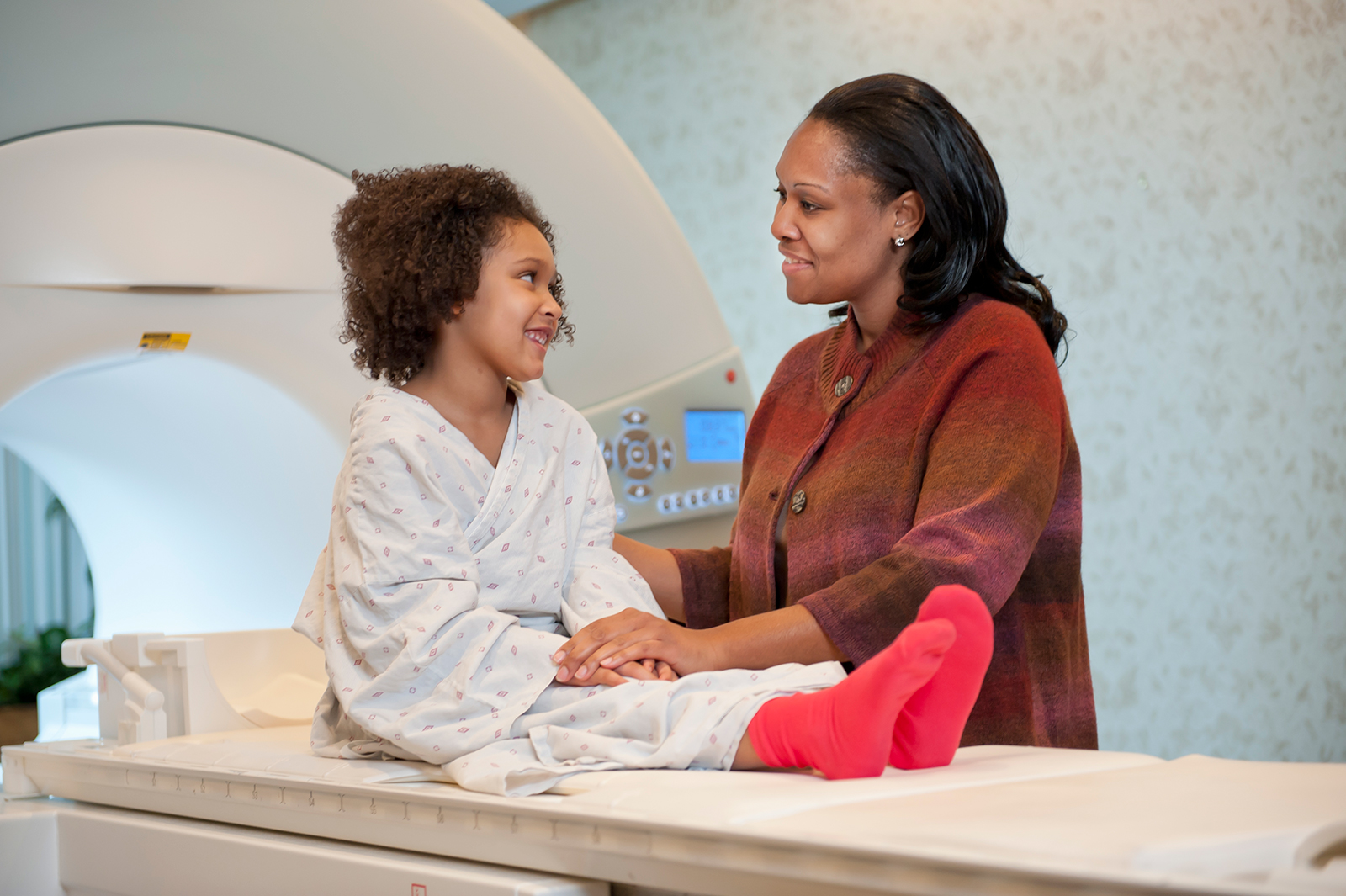Standards for abdominal and head injury work with near 100% accuracy

Strategies for when to recommend imaging scans for pediatric trauma patients predict with near 100% accuracy those who ultimately needed the scans and nearly 100% accuracy those who did not, according to a study funded by the Eunice Kennedy Shriver National Institute of Child Health and Human Development. These strategies, or prediction rules, seek to avoid unneeded computed tomography (CT) scans for children and adolescents with suspected abdominal and traumatic brain injuries. Although essential for identifying injuries in various parts of the body, the scans pose a slight increase in cancer risk, particularly for small children. The study authors concluded that the rules minimize inappropriate use of CT scans for evaluating children and youth for abdominal or head trauma.
The rules distinguished 100% of children with abdominal injuries undergoing physician evaluation and 100% of children under two years with clinically important brain injuries who needed CT scans from those who did not. However, the prediction rule failed to identify a small percentage of children older than two years who needed head scans from those who did not.
The study was led by James F. Holmes, M.D. and Nathan Kuppermann, M.D., of the University of California Davis, and colleagues. It appears in The Lancet Child & Adolescent Health.
Background
Many children come to emergency departments to be evaluated for head trauma or blunt (without a break in the skin) abdominal trauma. Such injuries may result from motor vehicle accidents, falls, or recreational accidents. CT scanning, an important tool for evaluating such trauma in children and youth, relies on ionizing radiation, which slightly increases the risk for radiation-induced cancers.
The Pediatric Emergency Care Applied Research Network (PECARN) developed prediction rules for use in children under evaluation in emergency departments to distinguish those with low risk for serious abdominal or brain injuries, who do not need CT scanning, from those at high risk who need such scanning.
Results
For the current study, researchers validated the PECARN prediction rules by evaluating 7,542 children with blunt abdominal trauma and 19,999 children with head trauma in the emergency departments at 6 sites.
After enrollment, patients were evaluated by emergency department physicians, who prescribed treatment, and decided whether a patient would undergo a CT scan. After the evaluation, but before the results of any scans were available, patients were then evaluated with the PECARN rules.
Of the 7,542 children enrolled in the abdominal trauma group, the PECARN rule predicted 100% of the children who had serious abdominal injuries (145 patients) and 100% of the 3,488 of the patients who did not.
The authors evaluated head trauma patients in two groups: those younger than two years old, and those older than age two. Of the 5,647 children younger than two in the head trauma group, the PECARN rule correctly identified 100% of the 42 children who had significant brain injuries and 100% of the 2,940 who did not. Of the 14,352 children two years and older in the head trauma group, the rule identified 98.8% (168 out of 170) of children who had significant brain injuries and nearly 100% (6,015 out of 6,017) who did not.
Significance
The authors concluded that the study validated the prediction rules for pediatric abdominal or head trauma with a high degree of accuracy and can be considered safe for minimizing inappropriate CT scans in children needing care for abdominal or head trauma.
Reference
Holmes, JF, Kuppermann N, et al. PECARN prediction rules for CT imaging of children presenting to the emergency department with blunt abdominal or minor head trauma: a multicentre prospective validation study. The Lancet, Child and Adolescent Health. 2024.
 BACK TO TOP
BACK TO TOP